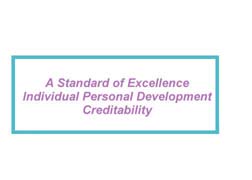

Certification Procedures
 What is the point of certification?
What is the point of certification?
There are three major arguments which the early childhood education community has found persuasive. These are not ranked, for each is seen to be equally important, in spite of the fact that they must be written one after another.

| One argument is that members of the community have an obligation to ensure families that their young children are looked after in settings where a high quality of care is provided. As in other professions, a standard of excellence maintained by an independent organization of its own members offers one such assurance to those who use the service. Just as society does not tolerate dentists who drill gum tissue instead of teeth, or doctors who operate on the wrong leg, it cannot afford the consequences of adults who mishandle children, or do not have developmentally appropriate expectations for them, who misunderstand their interests or who cannot cope well with providing for a group of children. |
One argument is that certification is a formative process that provides personal development for individual early childhood educators. Through identification of strengths and weaknesses, and programs to address these, those working with children make an effort to provide better quality care for children. The process of becoming certified provides a focus for reflectiveness and development in the participants. This is a compelling argument for the humanists interested in "becoming" and in increased awareness among early childhood educators. The process then is seen as an instrument for change from within, changes in perception, in beliefs and attitudes, which then permit the participant to behave differently or to change aspects of the external environment. For the participants, this is also the argument with the most immediacy, for their commitment to the process of certification becomes part of their daily lived experience.
One argument is that certification will provide early childhood educators with credibility in society. Meeting a standard of excellence in the work setting is regarded favourably by the public. When early childhood educators provide a skilled human service to a degree of excellence, the service will be valued, not simply because it is necessary, but because it has merit. It becomes more difficult to withhold salary, benefits, and working conditions commensurate with such a valuation. There is the intention, then, that credibility in the eyes of the public will gradually permit increased salaries, benefits and better working conditions for early childhood educators.
 How did this manual come about?
How did this manual come about?
In the spring of 1985, the Preschool Education Association of Nova Scotia, PSEANS, and the Child Development Services for Nova Scotia jointly invited a consultant to construct a workable manual for early childhood educators from the materials already developed by these groups. Although the initial impetus for revision began with the PSEANS wanting its 209 page competency-based manual reduced, it soon became clear that the interest in province-wide certification was much broader and that there was goodwill on the part of several organizations in working together. Throughout the year, key persons in both the Preschool Education Association of Nova Scotia and in Child Development Services have been most cooperative and sensitive to the concerns of the other professional group, and it is evident that there is, in both organizations, the hope of a successful joint project and the will to make it work.
 |
 |
|
This excerpt is from Certification Procedures, published by the Certification Council of Early Childhood Educators of Nova Scotia. |

|
Posted by the Certification Council of Early Childhood Educators of Nova Scotia, July 1997. |
 |  |  |